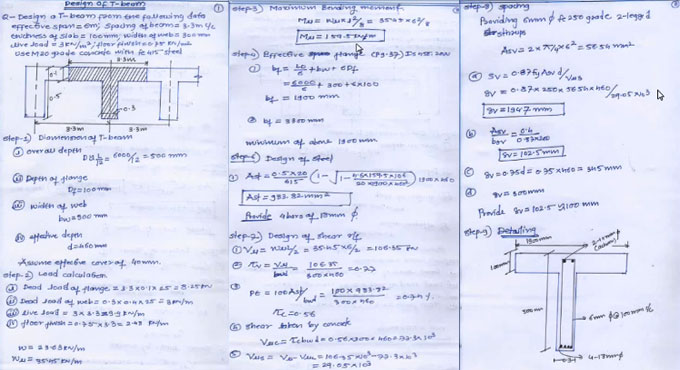
Some useful tips to design a T-beam with the use of limit state method
This construction video briefly describes how to create the design of t-beam with the use of limit state method.
A T-beam (or tee beam) is applied in construction extensively. It is a structural element developed with reinforced concrete, wood or metal. It contains a t-shaped cross section that is formed by a stem and a flange of reinforced concrete or rolled metal.
The top of the t-shaped cross section acts as a flange or compression member in withstanding compressive stresses. The web (vertical section) of the beam underneath the compression flange contributes to withstand shear stress and offer better separation for the coupled forces of bending.
A T-beam has the capacity to tolerate large loads by providing resistance in the beam or by internal reinforcements. It operates similar to singly reinforced beam.
In order to enhance the structural strength of a T-beam, just utilize an inverted T-beam together with a floor slab or bridge deck linking the tops of the beams. If it is accomplished perfectly, the slab performs as the compression flange.
A limit state belongs to a state of prospective failure apart from which the structure stops implementing its proposed function suitably, by way of either safety or serviceability; i.e. it either breaks down or becomes unserviceable.
There are 2 types of limit states:
1. Ultimate limit states / Limit state of collapse, which treat strength, overturning, sliding, buckling, fatigue, fracture, etc
2. Serviceability limit states, which treat trouble to occupancy and/or malfunction because of extreme deflection, crack-width, vibration, leakage, etc.
LSM provides a wide-ranging and logical solution to a design issue by taking into consideration numerous safety factor format which intends to offer sufficient safety at ultimate loads and sufficient serviceability at working/service loads by taking into account all possible 'limit states'.


